
With a propulsive yield of almost 2 million pounds (900,000 kg), a rarely-used variant of the United Launch Alliance (ULA) Atlas V roared aloft from Space Launch Complex (SLC)-41 pad surface at Cape Canaveral Air Force Station, Fla., late Friday afternoon, to deliver the highly secretive NROL-101 payload into orbit for the National Reconnaissance Office.
Liftoff of the “Mighty Atlas”—sporting a trio of upgraded strap-on boosters—occurred at 5:32 p.m. EST Friday, just at sunset, and in doing so ended more than three frustrating and launchless months for ULA. This was the Centennial, Colo.-headquartered launch provider’s fifth mission of 2020, tying with a similar number of flights last year. Due to the classified nature of NROL-101, at the “customer’s request”, live coverage ended shortly after Payload Fairing (PLF) jettison.
As detailed in AmericaSpace’s NROL-101 preview article, virtually nothing of substance has trickled into the public domain about the nature of the payload. However, its presence atop the Atlas V in its infrequently-used “531” configuration—equipped with a 17-foot-diameter (5-meter) payload fairing, three solid-fueled boosters and a single-engine Centaur upper stage and nicknamed “The Thunderer”—does offer an indicator of its possible size, mass, orbital destination or energy requirements.
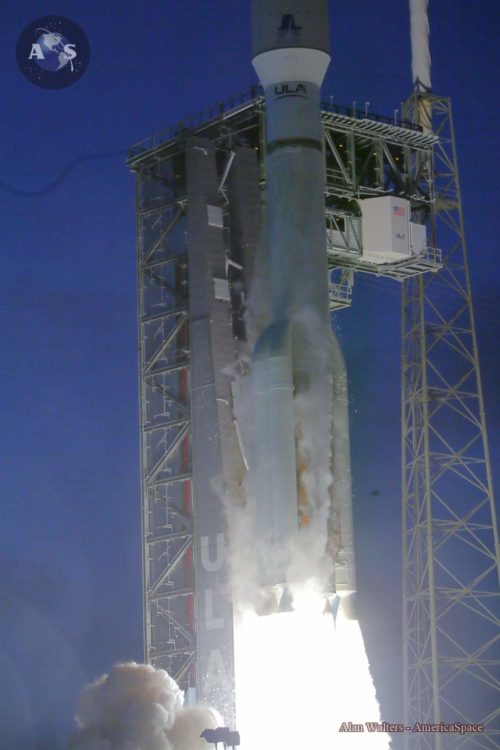
The 531 had only been used three times before today, delivering the first three Advanced Extremely High Frequency (AEHF) military communications satellites in August 2010, May 2012 and most recently September 2013. It has the capability to lift 34,350 pounds (15,575 kg) to low-Earth orbit and 16,480 pounds (7,475 kg) to Geostationary Transfer Orbit.
The Atlas V Common Core Booster (CCB) and Centaur for this mission were delivered to the Cape in early July, followed by the three uprated Graphite Epoxy Motors (GEMs) later that month. Provided by Northrop Grumman Corp., the boosters are officially designated “GEM-63”, on account of the 63-inch (1.6-meter) diameter of their cases.
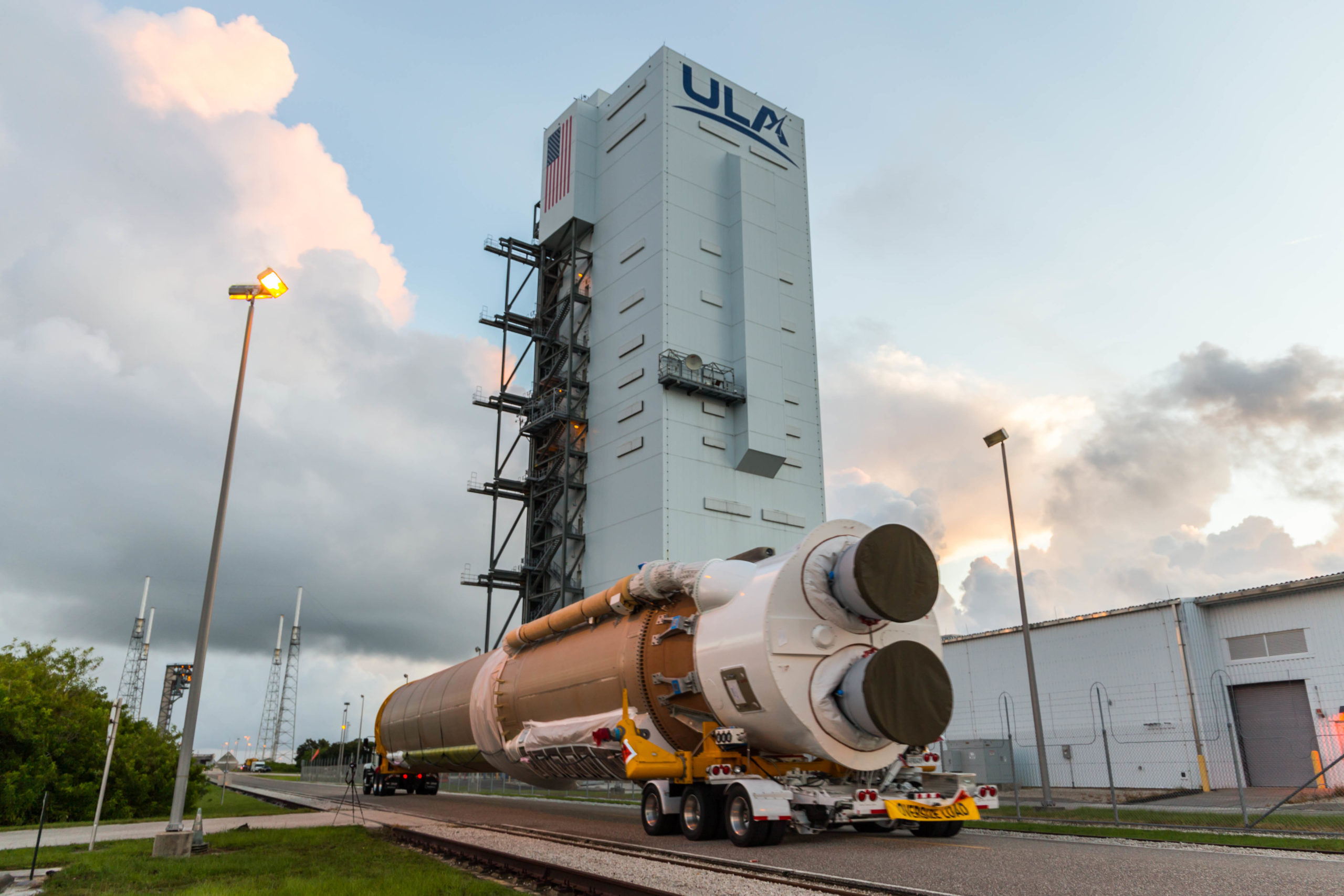
Standing 65 feet (20 meters) tall, they are the longest single-case solid-fueled motors ever built by Northrop Grumman and will replace Aerojet Rocketdyne’s AJ-60A boosters, which previously supported 39 Atlas V missions between July 2003 and July 2020. A further (and taller) upgrade, known as the GEM-63XL, will fly in tandem with Vulcan-Centaur next year.
These gigantic rocket parts came together in the 300-foot-tall (100-meter) Vertical Integration Facility (VIF) in September as part of the Launch Vehicle On Stand (LVOS) milestone. Last month, minus its Medium Payload Fairing (PLF), the vehicle was rolled the 1,800 feet (550 meters) from the VIF to the SLC-41 pad surface for a Wet Dress Rehearsal (WDR).
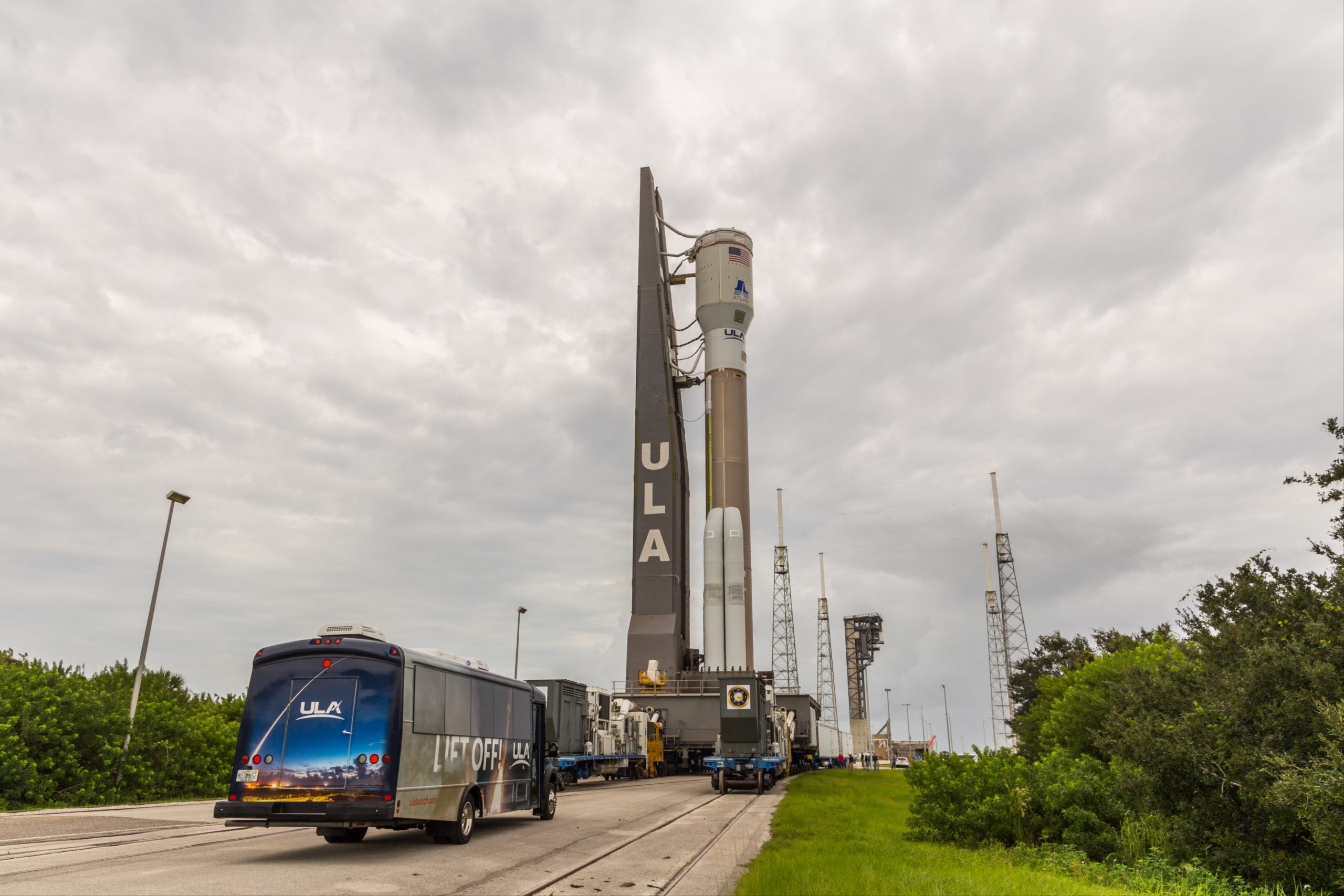
Conducted by ULA in advance of missions with critically-short “launch windows” or national security flights, the WDR saw technicians load the Atlas V tanks with 25,000 gallons (113,650 liters) of rocket-grade kerosene (known as “RP-1”) and 66,000 gallons (300,000 liters) of cryogenic liquid oxygen and hydrogen. Teams proceeded through a full countdown, entering the final built-in hold at T-4 minutes and pressing on towards a simulated cutoff point just prior to Engine Start.
In the wake of the WDR, the RP-1 remained in the Atlas V tanks, but the cryogens were fully drained and the stack was returned to the VIF for integration of its payload. On 26 October, NROL-101—fully encapsulated in its two-piece fairing—was mounted atop the rocket, topping it off at 206 feet (62.8 meters) tall.
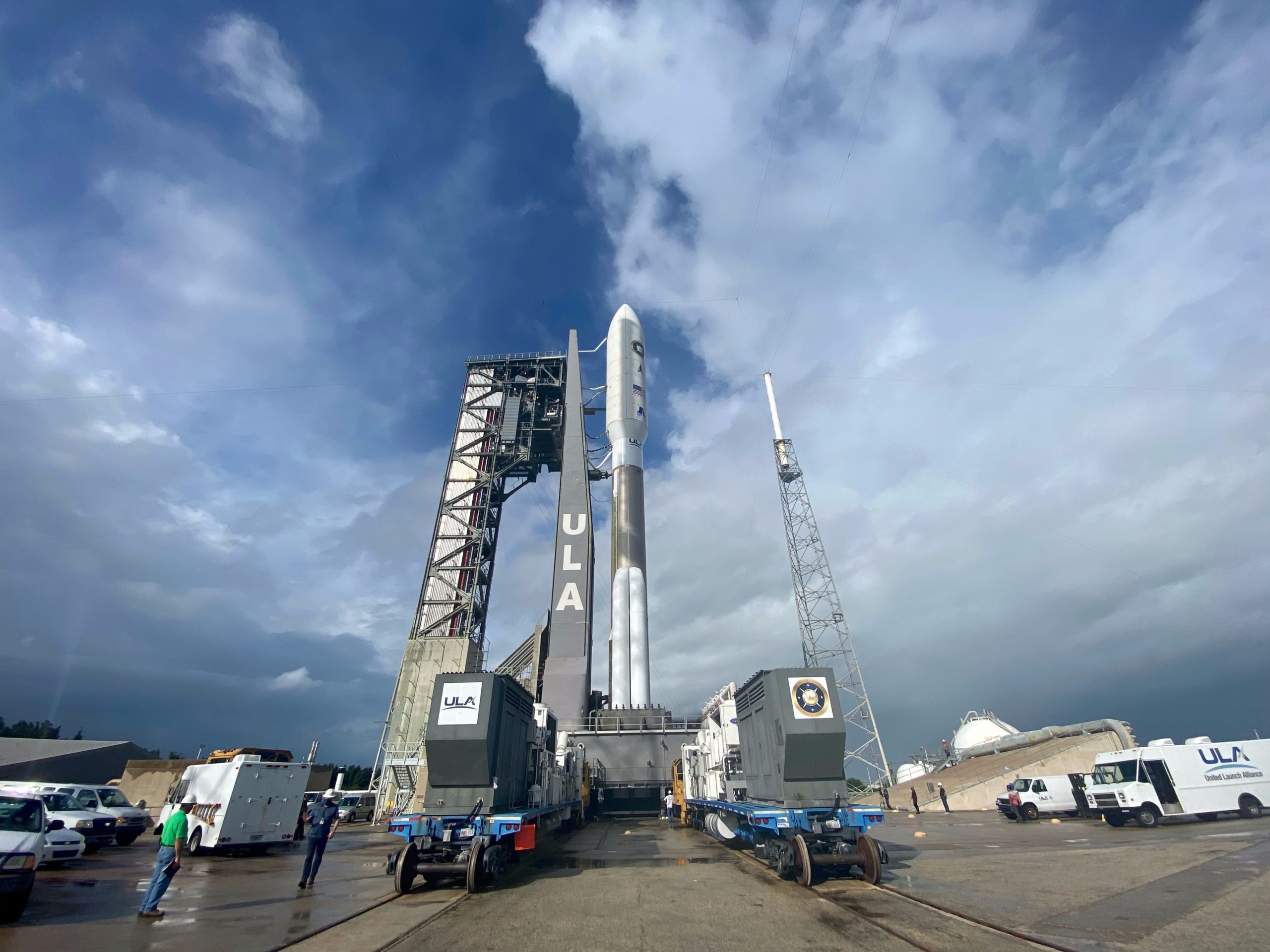
Originally targeting a sunset liftoff on 3 November, a smooth Launch Readiness Review (LRR) on Saturday produced a “Go” for the Atlas V to be rolled from the VIF to the pad on the 2nd. Although the vehicle and its Mobile Launch Platform (MLP) reached the pad without incident, a flow-rate reduction was noted in the payload’s Environmental Control System (ECS), which prompted an almost immediate rollback to the VIF. “Platforms in the VIF enabled technicians to reach this area at the top of the rocket,” ULA subsequently noted on its website, “which is inaccessible at the launch pad.”
“Going to roll back to the VIF,” ULA CEO Tory Bruno tweeted. “Very high winds at the pad. May have sustained damage to the upper ECS duct. Spacecraft is fine, but need to check it out.” It would appear that the task was accomplished swiftly, for the Atlas V was returned to SLC-41 later on the afternoon of 3 November. A second attempt to launch on the 4th was scrubbed shortly after the onset of cryogenic tanking, due to an unexpected system response from remotely commanded ground system liquid oxygen valves.
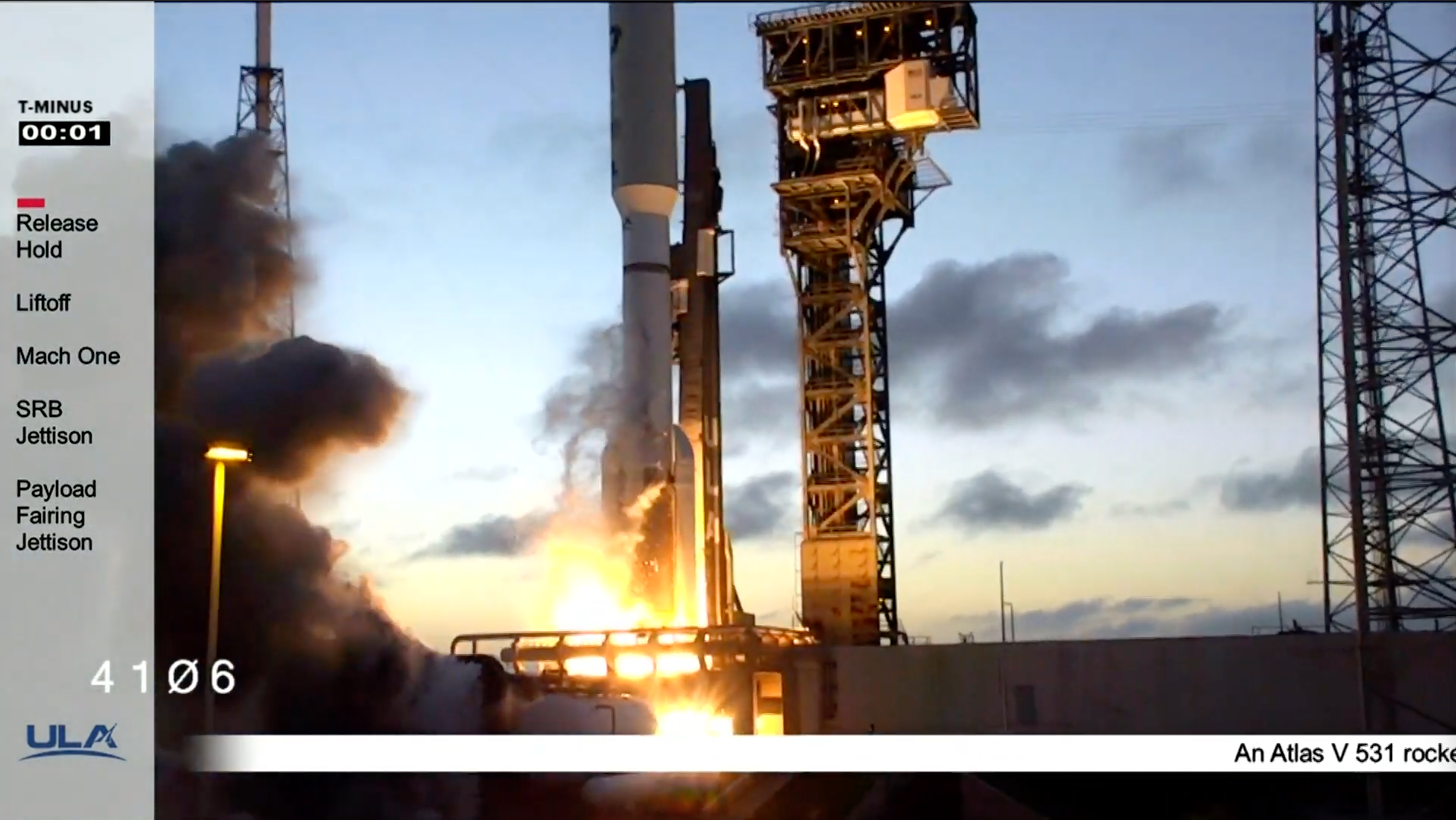
The next attempt was initially expected no sooner than 6 November, which soon became 8 November. Then the arrival of Tropical Storm Eta and an expected spate of poor weather pushed the No Earlier Than (NET) date back yet further to the 11th, the 12th and finally—perhaps more than a little ominously—to 5:13 p.m. EST on Friday 13th. The giant Atlas V was rolled back out to the SLC-41 pad surface on Thursday afternoon.
According to the 45th Weather Squadron at Patrick Air Force Base, conditions for Friday’s attempt were predicted to be 90-percent-favorable, deteriorating to 70-percent in the event of a scrub to Saturday. “By Friday, Eta drags a weak cool front through the area and conditions quickly improve through the day behind it,” the forecast noted in its L-1 update on Thursday. This was expected to bring north-westerly to northerly winds varying from 11.5 mph (18.5 km/h) to 17 mph (27 km/h) and a few scattered cumulus clouds.
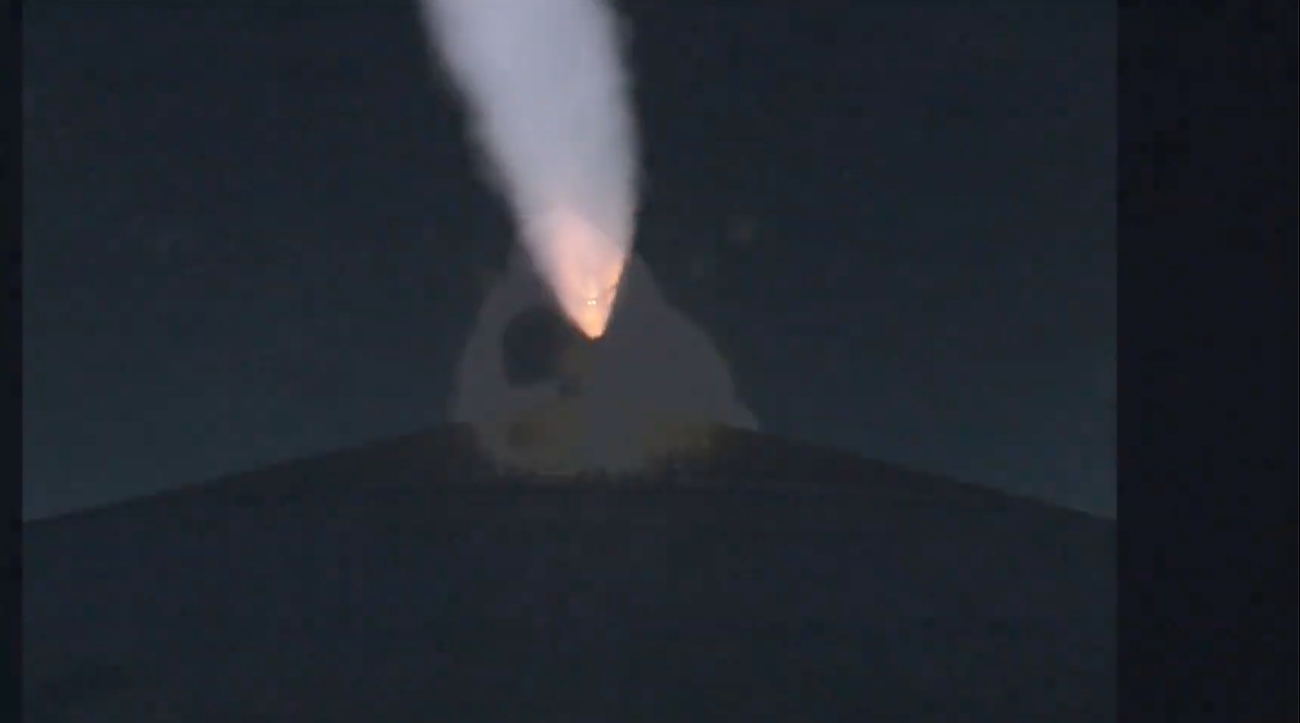
Countdown operations began about seven hours prior to liftoff, but a valve timing issue pushed T-0 back to 5:24 p.m. EST. Fueling of the Atlas V and Centaur with their flight supply of liquid oxygen and hydrogen got underway shortly thereafter and proceeded without incident. “Weather is beautiful,” tweeted Mr. Bruno. “No issues being worked.” Shortly afterwards, T-0 was refined to 5:32 p.m. EST.
Liftoff when it came occurred right on the cusp of sunset, producing a beautiful light show for onlookers along the Space Coast. The core stage’s Russian-built RD-180 engine roared to life at T-2.7 seconds and quickly ramped up to full power, with the three GEM-63s lighting at T-0 to push the vehicle off SLC-41 with a combined thrust of almost 2 million pounds (900,000 kg).
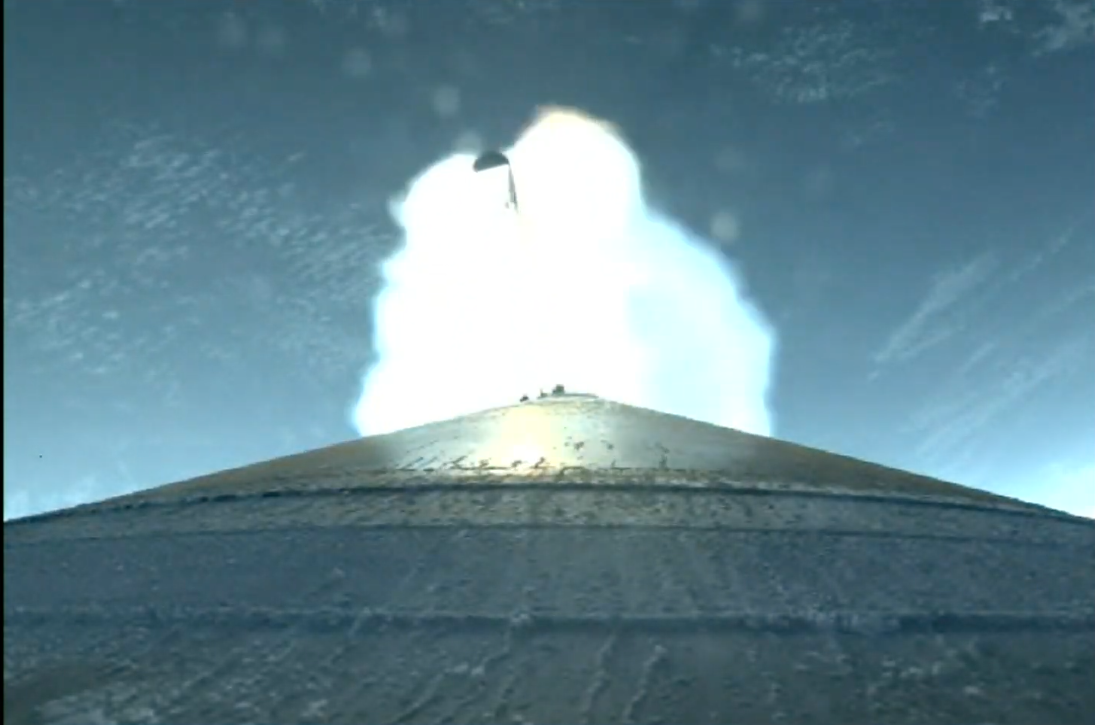
Passing Mach 1 at 38 seconds into ascent, and experiencing a period of peak aerodynamic turbulence (known as “Max Q”) shortly thereafter, the RD-180 burned hot and hard for a total of four minutes. At one stage, the Mighty Atlas even appeared to glow an unearthly red in the dying light of Friday. In the meantime, the GEM-63s were themselves discarded at two minutes and the PLF was jettisoned a little past three minutes into the flight.
This evening’s successful launch marks the fifth ULA mission of 2020, coming on the heels of Solar Orbiter in February, the sixth and last AEHF bird in March, the latest long-duration voyage of the X-37B Orbital Test Vehicle (OTV) in May and NASA’s Mars-bound Perseverance rover in July.
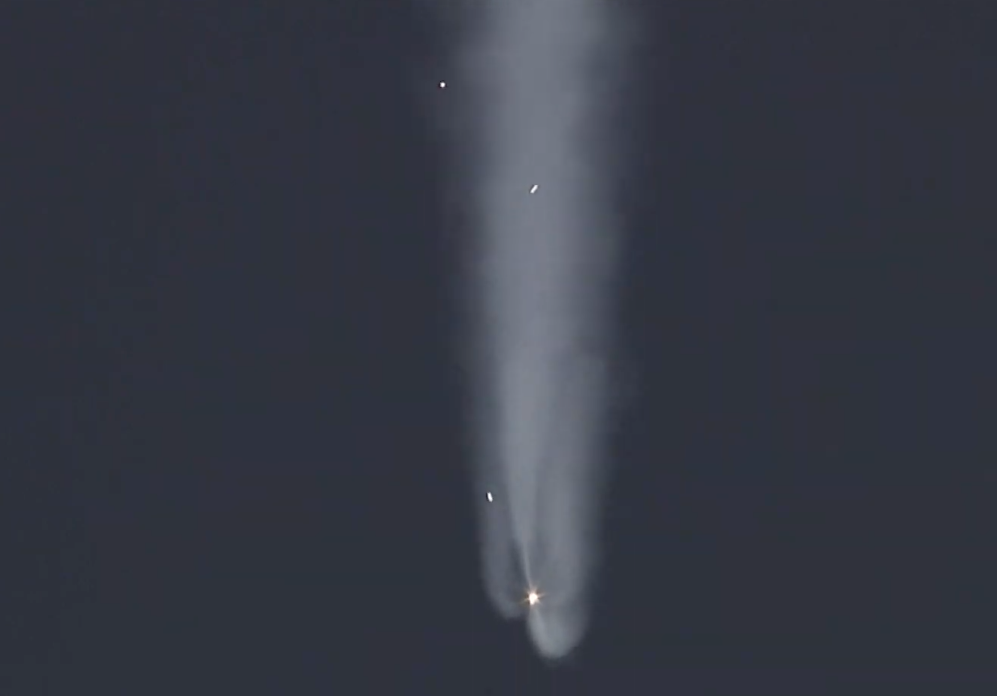
Original plans called for the triple-barreled Delta IV Heavy to launch the highly secretive NROL-44 payload in late August, but that mission was repeatedly postponed by a multitude of technical and weather-related issues, including two dramatic pad aborts in the final seconds of the countdown. NROL-44 is currently classified as “Indefinite” on the Eastern Range and no new launch date has been issued.
As such, only one more mission—another Delta IV Heavy, laden with the classified NROL-82 payload—looks set to fly before year’s end. It may launch in December from Space Launch Complex (SLC)-6 at Vandenberg Air Force Base, Calif., closing out 2020 with only six flights for ULA. That will represent a slight increase over the five missions conducted in 2019, but still marks out 2020 as one of the least-flown years on record in terms of launch cadence. Looking ahead to 2021, the picture brightens, with up to ten Atlas V missions and the maiden voyage of ULA’s new Vulcan-Centaur heavylifter.
.
FOLLOW AmericaSpace on Facebook and Twitter!
.
.





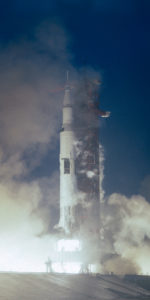
3 Comments
3 Pings & Trackbacks
Pingback:Atlas V Fully Stacked, Targets SBIRS GEO-5 Launch NET 17 May « AmericaSpace
Pingback:ULA Primed for 17 May Launch, First of Eight Atlas V Missions for 2021 « AmericaSpace
Pingback:ULA Primed for 17 May Launch, First of Eight Atlas V Missions for 2021